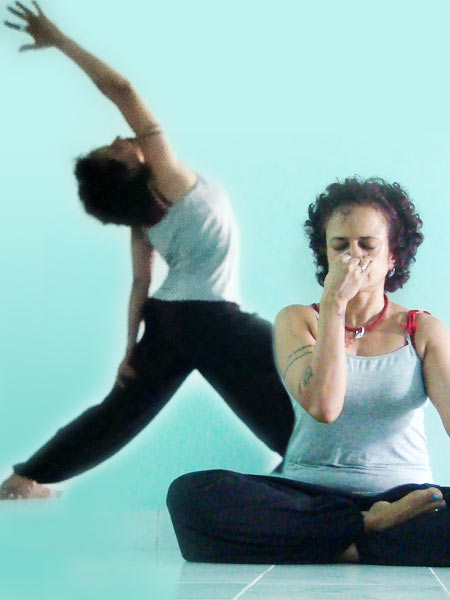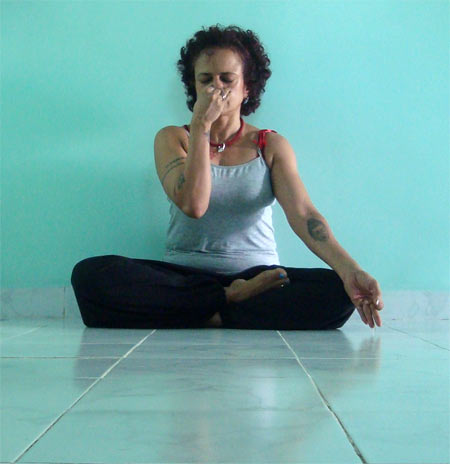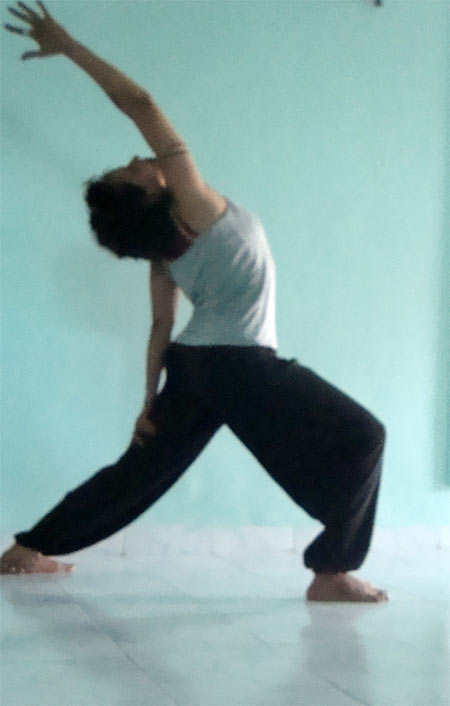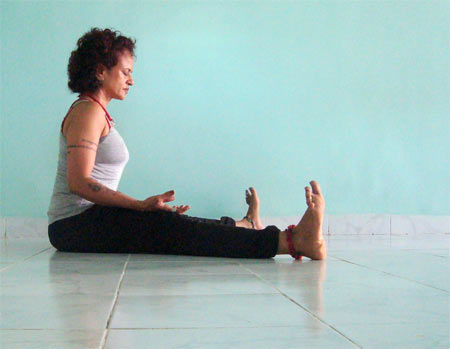 | « Back to article | Print this article |
Want to QUIT SMOKING? Try yoga
Shameem Akthar, yogacharya, trained with Sivananda Yoga Vedanta center, takes you through five practices that will help quit smoking.
Neither images nor stringent alerts on cigarette packets ever put off a smoker. Though it may cause a slight inhibition, most smokers believe that they are going to give up smoking the next day. They also subconsciously believe that these warning and alerts are not for them, but for hardcore smokers who will not have the mental stamina to quit smoking. This is an interesting aspect of most addictions that all addicts (and not just smokers) believe that they will quit their habit the next day and their indulgence now will not interfere with that decision. This includes even foodies struggling with binge-eating.
At a certain level, all addictions work on the chemicals coursing in our blood and their association with some emotion that they mimic very cunningly. For smokers it is the chemical messenger acetylcholine.
A small dose of nicotine can reach the brain in a few seconds, with more potency than an injection. Because it clicks into pleasure centers in the brain (like the dopamine system, which is a reward hormone) addicts will find it difficult to quit. Also addiction 'conditioning' -- the emotional triggers that make the smoker believe that a situation is incomplete without a cigarette also makes it tough to quit.
It also, like other such substances, has a calming effect while stressed. So, all in all, nicotine coursing in the blood makes it difficult for a smoker to give it up easily.
How yoga works in such circumstances?
Yoga naturally switches on and works on acupressure points for major reward centers. It is like replacing one bad addiction with a good one! It also involves pranayama practices like anulom-vilom (alternate nostril breathing) which create impulse control. This is one of the most important practices you may want in your daily practice, if you seriously wish to quit smoking.
For any addictive behaviour to be dealt through yoga, you must ensure that you practice regularly; that you repeat the same practices daily instead of experimenting with different practices or poses; you need to increase the duration in these practices. You must also make meditation an important and large part of your daily practice.
For more of Shameem's yoga writings visit http://jaisivananda.blogspot.com. Shameem's second book Yoga in the workplace, with photographs by ace photographer Fawzan Husain, is now available at online shops and bookshops across the country. It is also available as e-book, with Kindle, Amazon.
Are you a former smoker? Tell us just how you managed to kick the butt! Post your comments on ZaraBol right here!
Want to QUIT SMOKING? Try yoga
Anulom Vilom (Alternate nostril breathing)
Sit in any cross-legged position. Keep your right hand in Vishnu Mudra (index and middle finger pressed down, using other fingers to open and shut either nostril). Left hand should be in chin mudra (consciousness mudra) with tip of index and middle finger touching. Shut eyes, sit up straight.
Take one deep breath. Shut your right nostril. Inhale to a count of four from the left nostril. Hold both nostrils for a count of 16. Exhale from right nostril for count of eight. Then from right inhale for four counts. Hold both nostrils for 16 counts. Exhale from left for eight counts. This is one round. You must start with five rounds.
Increase it to ten rounds daily.
Benefits: Most cure-all and powerful practice in all of yoga, it is used for emotional culturing, impulse control and mind-control benefits. It is also the most healing of all practices.
Are you a former smoker? Tell us just how you managed to kick the butt! Post your comments on ZaraBol right here!
Want to QUIT SMOKING? Try yoga
Antar mouna (Inner silence meditation)
Sit still in a cross-legged position. Progressively take your mind over each sense. Identify either an experienced or imagine experience of that particular sense organ. Then split this experiences into its various components -- actual sensation, the brain's interpretation of the source of the sensation, your reaction, and finally the fourth stage of stepping back from your own reaction and imagining yourself indifferent to the sensation.
You may cover all the five senses in such a fashion, taking around 20 minutes to half hour for this practice. Open eyes when you finish the practice.
Benefits: It is a very powerful tantric yoga meditation. It creates a state of vairagyga or dispassion, an ability to step back from one's own experiences. A daily practice can promote tremendous mind-control that would help break addictive patterns.
Are you a former smoker? Tell us just how you managed to kick the butt! Post your comments on ZaraBol right here!
Want to QUIT SMOKING? Try yoga
Virabhadrasana (Warrior pose, variation)
Stand up straight, with feet a meter apart. Point right foot to the right, left is lightly turned inwards. Place right arm at right ear, raising it high. Place left hand at the back of the left thigh. Look ahead. Inhale. Begin to slide left hand at the back of the left thigh, as you begin to lunge from the right knee as shown, bending at the knee. Then when you have reached the maximum lunge, continue normal breathing, and lift head to look at the raised hand. Hold for 15 seconds. Repeat for the other side.
Benefits: All lunges engage and work on the uro-genital system which are involved with the flow of our chemical messengers/neuro-chemicals. They also create mental grit, all of which can help control addictive behaviour.
Are you a former smoker? Tell us just how you managed to kick the butt! Post your comments on ZaraBol right here!
Want to QUIT SMOKING? Try yoga
Upavista konasana (Wide-legged wide angle pose)
Sit up straight, your back erect and shoulders relaxed. Spread your legs as wide as you can comfortably. Straighten your back without stiffening it.
Place your hands on your thighs, palms facing up. Shut your eyes. Stay in this pose for a few seconds initially. Keep increasing time in the pose as your comfort level increases, up to a minute or so.
Those with breathing problems and lower back issues must sit on a firm cushion. Ensure chest is jutting out, knees are down, stomach is drawn in, your breathing is normal and shoulders are drawn down.
Benefits: Is meditative, and encourages emotional culturing. Has similar benefits to lunges, as mentioned above. Promotes deep breathing, helping rectify problems that have developed through smoking.
Are you a former smoker? Tell us just how you managed to kick the butt! Post your comments on ZaraBol right here!
Want to QUIT SMOKING? Try yoga
Dolasana (Pendulum pose)
Stand upright, feet about two feet apart, pointing ahead. Interlock hands, placing them behind head.
Inhale. Exhaling, drop the head to right knee.
Inhale, exhaling swing head to left knee. This is one round. Do up to three to five rounds, slowly and with control. Focus on the feet throughout, to avoid losing balance.
Inhale to return to starting posture.
Benefits: Similar to the above.
Are you a former smoker? Tell us just how you managed to kick the butt! Post your comments on ZaraBol right here!





